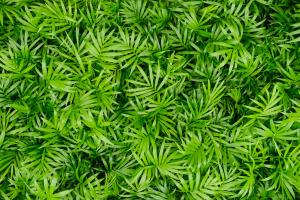What Do Plants and Trees Have
Plants and trees are an essential part of our ecosystem. They help balance the oxygen and carbon dioxide levels in the atmosphere, create habitats for animals, and provide resources for humans. But what else do plants and trees have? In this article, we will explore some of the amazing and surprising traits that make plants and trees so unique and important.
Nutrient Absorption
One incredible trait of plants and trees is their ability to absorb nutrients from the soil. They use their roots to take in water, minerals, and other nutrients necessary for growth. But did you know that some plants have developed specialized adaptations to collect nutrients in extreme environments? For example, pitcher plants have evolved to catch insects and other small animals in their pitcher-shaped leaves, which provide valuable nitrogen and other nutrients that they cannot obtain from the soil.
Defense Mechanisms
Plants and trees have developed a wide range of defense mechanisms to protect themselves from predators and other threats. Some species produce chemicals or toxins that discourage herbivores from eating their leaves or fruits. Others have thorns or spines that make them unappealing or difficult to consume. And some plants even have adaptations that allow them to communicate with each other to warn of impending danger or to attract predators of their attackers.
Environmental Adaptations
One of the most impressive traits of plants and trees is their ability to adapt to their environment. Some species can grow in extreme temperatures or altitudes, while others can thrive in salty water or soil. Some plants have even developed the ability to bind and store heavy metals in their tissues, protecting themselves and other organisms from toxic environmental pollutants.
Reproduction Strategies
Plants and trees have evolved a wide range of reproductive strategies to ensure the survival of their species. Some species depend on pollinators like bees or hummingbirds to transfer pollen between flowers, while others can self-pollinate or reproduce asexually. Some trees can even produce seeds that remain dormant for years, waiting for the right conditions to grow into a new plant.
Conclusion
As we have seen, plants and trees have an array of remarkable and unique traits that make them essential components of our ecosystem. From nutrient absorption to defense mechanisms, environmental adaptations, and reproductive strategies, these organisms are full of surprises and continue to inspire researchers and nature enthusiasts around the world. It is important that we continue to appreciate and protect our planet's plant and tree life, as they are vital to the health and well-being of our planet and its inhabitants.

 how many times do yo...
how many times do yo... how many planted tre...
how many planted tre... how many pine trees ...
how many pine trees ... how many pecan trees...
how many pecan trees... how many plants comp...
how many plants comp... how many plants can ...
how many plants can ... how many plants and ...
how many plants and ... how many pepper plan...
how many pepper plan...






























